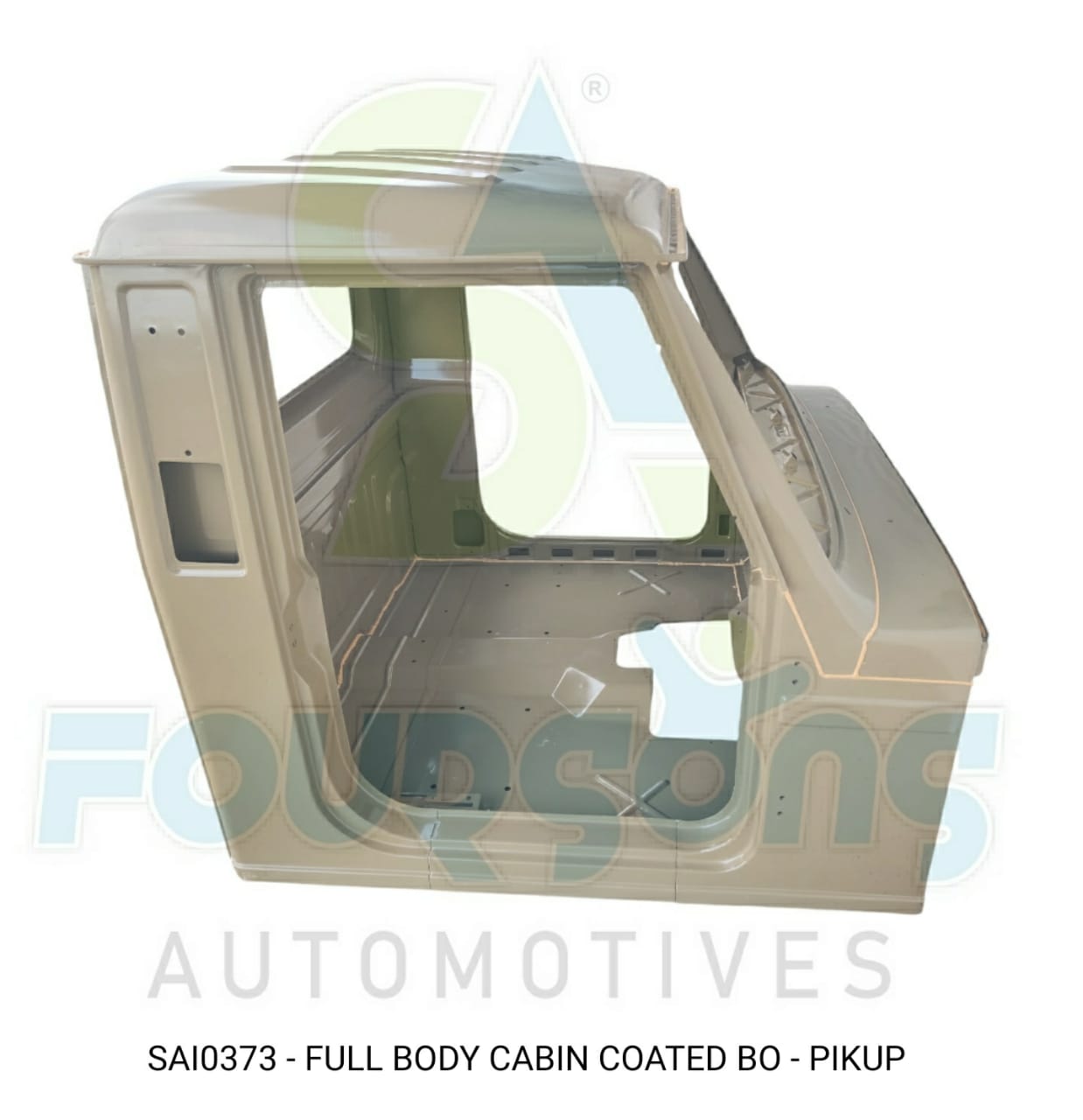BOLERO PICKUP CABIN FB 1.3

Details
The Mahindra Bolero Pickup Cabin Assembly refers to the complete structure or enclosure of the driver and passenger compartment in the Mahindra Bolero Pik-Up, which is a popular commercial vehicle in India, designed for transporting goods and materials. The cabin assembly includes the components that make up the driver's space as well as the passenger compartment (if applicable, in some models).
Key Details About the Mahindra Bolero Pickup Cabin Assembly:
Purpose & Function:
- The pickup cabin assembly serves to protect the driver and passengers (if any) from external elements like weather, dust, and road debris, while also providing a secure environment for operating the vehicle.
- It houses critical components such as the steering wheel, dashboard, seats, windows, doors, and roof.
- The cabin assembly ensures that the vehicle's internal components are safely enclosed and offers a controlled environment for operation.
Material:
- The cab structure is primarily made from high-strength steel for durability and crash safety.
- The exterior panels are generally coated to resist corrosion, ensuring the cabin remains functional and attractive over time.
- Some models may use plastic or composite materials in non-structural areas for weight reduction and cost savings.
Design Features:
- The cabin is designed for functionality and ergonomics, with easy access to the driving controls, a spacious driver's seat, and ample storage space for tools or small cargo (in the case of crew-cab variants).
- Depending on the variant, the Mahindra Bolero Pik-Up can have a single cabin (for the driver) or a double cabin (to accommodate additional passengers).
- The cabin typically includes basic amenities like air conditioning, audio systems, instrumentation, storage compartments, and seating for one or more passengers.
Components of the Cabin Assembly:
- Windshield and Windows: These provide visibility and protect the interior from wind, rain, and dust.
- Doors: The front and, in the case of a double cabin, the rear doors provide access to the cabin and ensure occupant safety.
- Seats: Depending on the variant, the cabin can accommodate a single driver or more, with adjustable and comfortable seating arrangements.
- Dashboard and Controls: Houses the vehicle's instrument cluster, switches for lights, air conditioning, and other important controls.
- Roof: Protects the cabin occupants from the elements.
- Floor Pan: The lower part of the cabin where the driver's feet and controls are positioned.
- Bumpers and Fenders: These provide additional protection to the cabin from debris and impacts.
Replacement & Aftermarket Options:
- If the pickup cabin assembly gets damaged due to accidents or wear over time, it can be replaced. A complete replacement of the cabin would typically involve swapping out the damaged cabin for a new one, which may involve dismantling most of the vehicle.
- OEM parts (Original Equipment Manufacturer) should ideally be used for replacement to ensure perfect fitment and safety standards.
- In case you are replacing just specific components of the cabin, such as a door, window, or dashboard, those parts can be sourced individually.
Cost of Replacement:
- Replacing the entire cabin assembly can be quite costly due to the labor involved in disassembling and reassembling the vehicle.
- OEM cabin assemblies are generally more expensive but ensure the same quality, fitment, and safety standards as the original vehicle.
- Aftermarket parts might be available at a lower cost, but the quality and fitment should be carefully assessed before purchasing.
Installation and Maintenance:
- Replacing or installing a new pickup cabin assembly typically requires skilled technicians, as it involves aligning and mounting several critical parts of the vehicle.
- Professional installation is highly recommended to ensure the correct functioning of all components (e.g., doors, windows, electricals, and dashboard systems).
- Routine maintenance of the cabin components includes checking for rust, ensuring the weather seals around doors and windows are intact, and repairing any damaged seats, dashboards, or controls.
Safety Considerations:
- The cab structure is designed to meet the safety standards, providing impact resistance in case of a collision and ensuring the safety of the driver and passengers.
- The cabin assembly also helps ensure that the vehicle's airbags (if applicable) deploy correctly, and that the safety features such as seatbelts and crumple zones function properly in the event of an accident.
Common Issues with the Cabin Assembly:
- Rust or Corrosion: Over time, moisture or road salt can cause the body panels of the cabin to rust, particularly in the lower sections of the doors or around the wheel arches.
- Damage to Windows: If the cabin is in a collision or faces impact, the windows might crack or break. This could lead to water leakage or affect visibility.
- Wear and Tear: Seats, interior panels, and dashboard components may show wear after prolonged use, particularly in commercial vehicles like the Bolero Pik-Up.
- Electrical Issues: Malfunctions in the cabin’s electrical systems, like lights, air conditioning, or dashboard indicators, can arise due to wiring problems or component failures.
Availability:
- You can find replacement cabin assemblies or individual cabin parts at authorized Mahindra service centers or through trusted aftermarket suppliers.
- Ensure that any parts you source are compatible with the specific model and year of your Mahindra Bolero Pik-Up.
Any Inquiry?
1 Pc.
Min. Order Quantity
PERFECT FINSIH WITH RAP
Finish
55000
